The Solomon R. Guggenheim Museum, often referred to as The Guggenheim, is an art museum at 1071 Fifth Avenue between 88th and 89th Streets on the Upper East Side of Manhattan in New York City. It is the permanent home of a continuously expanding collection of Impressionist, Post-Impressionist, early Modern, and contemporary art and also features special exhibitions throughout the year. It was established by the Solomon R. Guggenheim Foundation in 1939 as the Museum of Non-Objective Painting, under the guidance of its first director, Hilla von Rebay. The museum adopted its current name in 1952, three years after the death of its founder Solomon R. Guggenheim.
The museum's building, a landmark work of 20th-century architecture designed by Frank Lloyd Wright, drew controversy for the unusual shape of its display spaces and took 15 years to design and build; it was completed in 1959. It consists of a six-story, bowl-shaped main gallery...Read more
The Solomon R. Guggenheim Museum, often referred to as The Guggenheim, is an art museum at 1071 Fifth Avenue between 88th and 89th Streets on the Upper East Side of Manhattan in New York City. It is the permanent home of a continuously expanding collection of Impressionist, Post-Impressionist, early Modern, and contemporary art and also features special exhibitions throughout the year. It was established by the Solomon R. Guggenheim Foundation in 1939 as the Museum of Non-Objective Painting, under the guidance of its first director, Hilla von Rebay. The museum adopted its current name in 1952, three years after the death of its founder Solomon R. Guggenheim.
The museum's building, a landmark work of 20th-century architecture designed by Frank Lloyd Wright, drew controversy for the unusual shape of its display spaces and took 15 years to design and build; it was completed in 1959. It consists of a six-story, bowl-shaped main gallery to the south, a four-story "monitor" to the north, and a ten-story annex to the northeast. The main gallery contains a six-story helical ramp that extends along its perimeter, as well as a central ceiling skylight. The Thannhauser Collection is housed within the top three stories of the monitor, and there are additional galleries in the annex and a learning center in the basement. The museum building's design was controversial when it was completed but was widely praised afterward. The building underwent expansion and extensive renovations from 1990 to 1992, when the annex was built, and it was renovated again from 2005 to 2008.
The museum's collection has grown over the decades and is founded upon several important private collections, beginning with that of Solomon R. Guggenheim. The collection, which includes around 8,000 works as of 2022, is shared with sister museums in the Spanish city of Bilbao and elsewhere. In 2013, nearly 1.2 million people visited the museum, and it hosted the most popular exhibition in New York City.
Solomon R. Guggenheim, a member of a wealthy mining family, began collecting works of the old masters in the 1890s.[1] In 1926, he met artist Hilla von Rebay,[1][2] who introduced him to European avant-garde art, in particular abstract art that she felt had a spiritual and utopian aspect (non-objective art).[1] Guggenheim completely changed his collecting strategy, turning to the work of Wassily Kandinsky, among others. He began to display his collection to the public at his apartment in the Plaza Hotel in New York City.[1][3][4] Guggenheim and Rebay initially considered building a museum at Rockefeller Center in Manhattan.[2] As the collection grew, Guggenheim established the Solomon R. Guggenheim Foundation, in 1937, to foster the appreciation of modern art.[2][3][5]
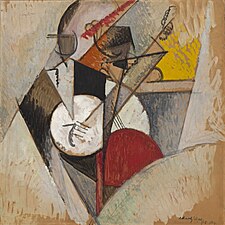 Albert Gleizes, 1915, Composition for "Jazz", oil on cardboard, 73 × 73 cm
Albert Gleizes, 1915, Composition for "Jazz", oil on cardboard, 73 × 73 cmThe foundation's first venue, the Museum of Non-Objective Painting, opened in 1939, under Rebay's direction, at 24 East 54th Street in midtown Manhattan.[2][5][6] Under her guidance, Guggenheim sought to include in the collection the most important examples of non-objective art by early modernists.[1][3][7] He wanted to display the collection at the 1939 New York World's Fair in Queens, but Rebay advocated for a more permanent location in Manhattan.[2] By the early 1940s, the foundation had accumulated such a large collection of avant-garde paintings that the need for a permanent museum was apparent,[8] and Rebay wanted to establish it before Guggenheim died.[2]
Design processIn 1943, Rebay and Guggenheim wrote a letter to Frank Lloyd Wright asking him to design a structure to house and display the collection.[9][10] Rebay thought the 76-year-old Wright was dead, but Guggenheim's wife Irene Rothschild Guggenheim knew better and suggested that Rebay contact him.[11] Wright accepted the opportunity to experiment with his "organic" style in an urban setting, saying that he had never seen a museum that was "properly designed".[12] He was hired to design the building in June 1943.[9][13][14] He was to receive a 10 percent commission on the project, which was expected to cost at least $1 million.[14] It took him 15 years, more than 700 sketches, and six sets of working drawings to create and complete the museum, after a series of difficulties and delays;[15][16] the cost eventually doubled from the initial estimate.[17]
Rebay envisioned a space that would facilitate a new way of seeing modern art. She wrote Wright that "each of these great masterpieces should be organized into space, and only you ... would test the possibilities to do so. ... I want a temple of spirit, a monument!"[18][19] Critic Paul Goldberger later wrote that Wright's modernist building was a catalyst for change, making it "socially and culturally acceptable for an architect to design a highly expressive, intensely personal museum. In this sense almost every museum of our time is a child of the Guggenheim."[20] The Guggenheim is the only museum Wright designed; its urban location required him to design it in a vertical rather than horizontal form, far different from his earlier, rural works.[21] Since he was not licensed as an architect in New York, he relied on Arthur Cort Holden, of the architectural firm Holden, McLaughlin & Associates, to deal with New York City's Board of Standards and Appeals.[22]
 Staircase at the Vatican Museums designed by Giuseppe Momo in 1932
Staircase at the Vatican Museums designed by Giuseppe Momo in 1932From 1943 to early 1944, Wright produced four differing designs. One had a hexagonal shape and level floors for the galleries, though all the others had circular schemes and used a ramp continuing around the building.[23][24][a] In his notes, he indicated that he wanted a "well proportioned floor space from bottom to top—a wheel chair going around and up and down".[12][14][25] His original concept was called an inverted "ziggurat", because it resembled the steep steps on the ziggurats built in ancient Mesopotamia.[12][21] Several architecture professors have speculated that the helical ramp and glass dome of Giuseppe Momo's 1932 staircase at the Vatican Museums was an inspiration for Wright's ramp and atrium.[26][27][28]
Site selection and announcement of plansWright expected that the museum would be in lower Manhattan.[29] Instead, in March 1944, Rebay and Guggenheim acquired a site on Manhattan's Upper East Side, at the corner of 89th Street and the Museum Mile section of Fifth Avenue, overlooking Central Park.[14][30][31] They considered numerous locations in Manhattan, as well as the Riverdale section of the Bronx, overlooking the Hudson River.[14][32] Guggenheim felt that the Fifth Avenue site's proximity to Central Park was important, as the park afforded relief from the noise, congestion and concrete of the city.[21] Wright's preliminary sketches fit the site nearly perfectly, although the site was about 25 feet (7.6 m) narrower than what Wright anticipated.[33] Guggenheim approved Wright's sketches in mid-1944.[14] Wright called the planned building an "Archeseum ... a building in which to see the highest".[31][34]
Wright's designs were announced in July 1945,[31] and the museum was expected to cost $1 million and be completed within a year.[35] The structure's main feature was a main gallery with a helical ramp, surrounding a lightwell with a skylight.[35][36] Guests would board an elevator to reach the top; a second, steeper ramp would serve as an emergency exit.[14] There would be a movie theater in the basement; an elevator tower topped by an observatory; a smaller building featuring a smaller theater;[37] storage space, a library, and a cafe.[35][38] Preliminary plans also included apartments for Guggenheim and Rebay, but these plans were scrapped.[37] Guggenheim acquired an additional parcel of land on 88th Street that July.[39] Wright built a model of the museum at Taliesin, his home in Wisconsin,[40] and displayed it at the Plaza Hotel that September.[41][42]
DifficultiesThe building's construction was delayed, first because of material shortages caused by World War II,[39][43] then by increasing construction costs after the war.[37][39] By late 1946, Guggenheim and Rebay had redesigned the basement theater to accommodate concerts.[43] Rebay and Wright disagreed over several aspects of the design, such as the means by which the paintings were to be mounted,[39][44] although they both wanted the design to "reflect the unity of art and architecture".[45] Wright continued to modify his plans during the late 1940s, largely because of concerns over the building's lighting, and created another model of the museum in 1947.[46] The collection was greatly expanded in 1948 through the purchase of art dealer Karl Nierendorf's estate of some 730 works.[7]
Progress remained stalled through the late 1940s,[47] and William Muschenheim renovated an existing townhouse on the site, at 1071 Fifth Avenue, for the museum's use.[47][48] Guggenheim's health was in decline, but he refused Wright's offer to downsize the planned building so it could be completed during Guggenheim's lifetime.[46] After Guggenheim died in 1949, members of the Guggenheim family on the foundation's board of directors had personal and philosophical differences with Rebay.[49] Under Rebay's leadership, the museum had become what Aline B. Saarinen described as an "esoteric, occult place in which a mystic language was spoken".[50][51] Some of the museum's staff and trustees wished to oust Rebay and cancel Wright's design.[47][48] Wright, however, persuaded several members of the Guggenheim family to acquire additional land on Fifth Avenue so his design could be developed in full.[47][52]
To accommodate the growing collection, in August 1951 the Guggenheim Foundation acquired an apartment building at 1 East 88th Street to remodel for museum use.[53][54] It now owned a continuous frontage on Fifth Avenue from 88th to 89th Street.[54][55] This prompted Wright to redesign the new building yet again, proposing a multi-story annex with apartments behind the museum.[47][55][45] The foundation also announced that the museum would start exhibiting "objective" works of art, as well as older artwork.[51][56] Rebay, who disagreed with this policy, resigned as director of the museum in March 1952.[57][58] Nevertheless, she left a portion of her personal collection to the foundation in her will.[59] Shortly after Rebay resigned, Wright filed plans for the building, which was now projected to cost $2 million.[17] It was renamed the Solomon R. Guggenheim Museum in 1952.[49]
Sweeney eraJames Johnson Sweeney was appointed the museum's director in October 1952.[60][61] He expanded the foundation's collecting criteria, rejecting Rebay's dismissal of "objective" painting and sculpture,[62][63] and started exhibiting some of the works placed in storage under Rebay's leadership.[51][64] In 1953, the museum hosted a retrospective of Wright's work, "Sixty Years of Living Architecture",[65][66] in a temporary pavilion Wright had designed.[67][47]
Construction and opening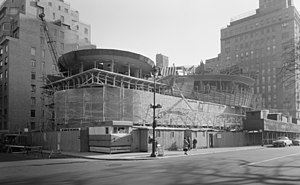 Photo of the construction, November 12, 1957
Photo of the construction, November 12, 1957Sweeney and Wright had a strained relationship, as they disagreed over basic elements of the museum's plan.[47][68] Sweeney, who believed its architecture should be subservient to the art, forced Wright to redesign it to accommodate more offices and storage facilities.[68] The building's lighting was a significant point of contention between them.[69][70] The New York City Department of Buildings (DOB) also rejected Wright's application for a construction permit in 1953 because the design did not meet building codes.[71] Wright tasked Holden with ensuring that the design met codes[72] and published revised drawings in 1954 and 1956.[73] Museum staff nevertheless complained that Wright's design did not provide enough storage or laboratory space.[71] To save money, he modified the design again in 1955, though these savings were canceled out by increasing construction costs.[70]
Four general contractors submitted bids in late 1954,[70] and the foundation ultimately hired the Euclid Construction Corporation.[74][67] The museum rented the Oliver Gould Jennings House at 7 East 72nd Street and relocated there before construction began.[70] On May 6, 1956, demolition of the site's existing buildings began.[74][75] The DOB issued a construction permit on May 23,[70] and work on the museum began on August 14.[67][70] Wright opened an office in New York City to oversee the construction, which he felt required his personal attention, and appointed his son-in-law William Wesley Peters to supervise the day-to-day work.[47][67] In practice, neither Wright nor Peters visited the site frequently, so Holden's William Short ended up managing the project.[70]
Sweeney wanted the new museum to allow "building up a collection which offers up a standard of judgment".[76] He wanted to change the color scheme, level out the sloping walls, and remove the clerestory windows, which led to prolonged disputes with Wright.[77][78][79] By early 1958, Harry F. Guggenheim had to handle all communications between Sweeney and Wright, who would not speak to each other.[78] The building topped out in May 1958,[80][81] and the scaffolding on the facade was removed by that August.[81][82] Meanwhile, Wright published drawings of the design in several architectural magazines, as he feared the design would be compromised after his death.[78][77] Against his request, Sweeney painted the walls white, and hung paintings from metal bars instead of placing them directly on the walls.[77][79] The building was Wright's last major work; he died in April 1959, six months before its opening.[83]
The building soft-opened for members of the media on October 20, 1959.[78] It was formally dedicated the next day,[84][85][86] drawing 600 visitors per hour.[86][87] Its design was generally able to accommodate the retrospectives and temporary exhibits that it hosted over the years.[4]
Messer eraSweeney resigned as the museum's director in July 1960, citing philosophical differences with the board of trustees,[88][89] and H. H. Arnason took over as temporary director.[51][90] He launched "the first survey of Abstract Expressionism in a New York museum" during his brief time as director.[51][91] Thomas M. Messer, director of the Boston Institute of Contemporary Art, succeeded Sweeney as director in January 1961; he worked under Sweeney, who continued to run the foundation.[92][93] Messer stayed for 27 years, the longest tenure of any director of a major New York art institution.[94] Under his leadership, the museum pivoted toward more contemporary artists, including those from Europe and Latin America.[95] Messer was not considered "an especially controversial director", though he also did not adhere to "the blockbuster school of exhibiting".[96]
1960s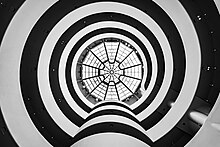 The skylight in the center of the museum
The skylight in the center of the museumWhen Messer joined the Guggenheim, the museum's ability to present artworks was still doubted because of the tilted and curved walls.[97] Almost immediately after becoming director, in 1962, he put on a large exhibition that combined the Guggenheim's paintings with sculptures on loan from the Hirshhorn collection.[97] In particular, there were difficulties installing three-dimensional sculptures because the slope of the floor, and the curvature of the walls could combine to produce vexing optical illusions.[98] Though the combination proved generally to work well in the Guggenheim, Messer recalled that, at the time, "I was scared. I half felt that this would be my last exhibition."[97] He had staged a smaller sculpture exhibition the previous year, where he learned how to compensate for the space's unusual geometry by constructing special plinths at a particular angle, but this was impossible for one piece, an Alexander Calder mobile whose wire inevitably hung at a true plumb vertical.[98]
After Messer acquired a private collection from art dealer Justin Thannhauser in 1963,[99][100] the Guggenheim hired Peters to renovate the monitor's second floor.[101][102] Thannhauser's collection was displayed within the monitor after the renovation was completed in 1965.[102] The foundation auctioned off artwork from the 15th and 16th centuries, which was incompatible with the museum's modern-art collection.[103] Rebay, who died in 1967, bequeathed over 600 artworks to the Guggenheim, although the museum did not receive the collection until 1971.[104] To raise money for further acquisitions, such as the works in Rebay's collections, the Guggenheim also sold off some modern artwork, including several Kandinsky works.[105]
To accommodate the expanding collection, in 1963, the Guggenheim announced plans for a four-story annex,[106] which the New York City Board of Standards and Appeals approved the next year.[107] The annex was downsized to two stories in 1966 due to complaints from local residents,[108] and was completed in 1968.[101][109] This freed up space on the main gallery's top two levels, which had been used as workshops and storage space ever since the building opened. Museum officials opened the top levels to the public in 1968.[110]
1970s and 1980sIn 1971, with increasing costs and decreasing endowment income, the Guggenheim recorded a large deficit for the first time in its history.[111] Additionally, although Wright had included space for a cafe at the southern end of the museum building, the space was instead used by the conservation and framing departments.[101] The foundation proposed adding a lobby and restaurant in the museum's driveway area in early 1973[112] but had difficulty agreeing on the plans,[113] which were revised that November.[114] As part of the project, designed by Donald E. Freed, the museum closed its driveway and added a dining area and bookstore there.[114][115] Facing a growing deficit and a shortage of exhibit space, the Guggenheim announced in 1977 that it would raise $20 million over the following five years.[116] Museum officials also planned to expand the annex on 89th Street.[116]
Messer became director of the Guggenheim Foundation in 1980 and continued to serve as the museum director, promoting two curators to directorial positions.[117] The Guggenheim renovated the Thannhauser wing in the early 1980s.[118] Following these changes, John Russell of The New York Times wrote that the Thannhauser Collection "may now be said to be the equivalent of the Frick in the domain of modern art."[118] "Works & Process", a series of performances at the Guggenheim, commenced in 1984.[119]
In 1982 Gwathmey Siegel & Associates Architects drew up designs for an 11-story annex on 88th Street, behind the existing museum building.[120] The original plan, announced in 1985, would have cantilevered over the existing building.[120][121] The design was downsized to 10 stories in early 1987 due to opposition from local residents.[122][123] At the time, the building could only exhibit 150 pieces, about 3 percent of the museum's 5000-work collection.[124] In anticipation of the annex's construction and a wider-ranging renovation of the older building, Gwathmey Siegel also renovated the Thannhauser wing's second floor and the top level of the main gallery's ramp in 1987.[125] The Board of Standards and Appeals approved the 89th Street annex that October,[126][127] despite continuing opposition.[128] Messer retired the next month, on the 50th anniversary of the collection's founding.[129] The New York City Board of Estimate approved plans for the Guggenheim's annex in 1988,[130] and the New York Supreme Court upheld the Board of Estimate's decision.[131]
Krens eraThomas Krens, former director of the Williams College Museum of Art, took over as the director of both the museum and the foundation in January 1988.[132][133] Over his nearly two-decade tenure, he led a rapid expansion of the museum's collections,[134] and the museum mounted some of its most popular exhibitions,[135] including "Africa: The Art of a Continent" in 1996;[136] "China: 5,000 Years" in 1998;[137] "Brazil: Body & Soul" in 2001;[138] and "The Aztec Empire" in 2004.[139] Unusual exhibitions included "The Art of the Motorcycle", a commercial art installation of motorcycles.[140][141]
1990s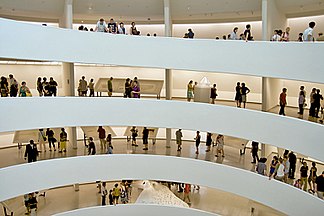 An interior view of the museum on a busy day
An interior view of the museum on a busy dayShortly after becoming director, Krens decided to spend $24 million renovating the Guggenheim.[142] Work commenced in late 1989. The museum initially remained open during the project,[143] but later closed for 18 months.[144][145] The monitor wing was restored, the 88th Street wing was converted from a conservation laboratory to a restaurant, and additional exhibition space was created at the top of the main gallery.[142] The 89th Street annex was built as part of this project,[128] and the basement was extended under Fifth Avenue.[146] The windows were replaced, and the clerestory windows along the ramp were unsealed and restored to their original design.[146][147] The building's exhibition space roughly doubled, allowing the museum to show 6 percent of its collection.[148]
The renovation was completed on June 27, 1992.[149][150] The museum's offices were moved to the annex, the basement, and the new Guggenheim Museum SoHo, and storage space and conservation activities were moved to other buildings.[146] The new annex allowed the museum to show more works from its permanent collection, as well as temporary exhibitions.[151] The foundation acquired 200 photographs from Robert Mapplethorpe in 1992[152][153] and renamed the annex's fourth-floor gallery after him in 1993.[154]
To finance the renovation and new acquisitions, the foundation sold works by Kandinsky, Chagall, and Modigliani, raising $47 million. This move was controversial, drawing considerable criticism for trading masters for "trendy" latecomers. In The New York Times, critic Michael Kimmelman wrote that the sales "stretched the accepted rules of deaccessioning further than many American institutions have been willing to do."[147][155] Krens defended the action as consistent with the museum's principles by expanding its international collection and building its "postwar collection to the strength of our pre-war holdings",[156] and noted that museums regularly conduct such sales.[155] He also expanded the foundation's international presence by opening museums abroad.[157]
Krens was also criticized for his businesslike style and perceived populism and commercialization.[140][158] One writer commented, "Krens has been both praised and vilified for turning what was once a small New York institution into a worldwide brand, creating the first truly multinational arts institution. ... Krens transformed the Guggenheim into one of the best-known brand names in the arts."[159] The museum cut back its operating hours in 1994, causing a 25 percent decline in annual attendance, even as the city's other art museums saw increased attendance.[160]
Samuel J. LeFrak announced in December 1993 that he would donate $10 million, the largest cash donation in the museum's history, with the Fifth Avenue building to be renamed for him and his wife.[161][162] The next month, Ronald O. Perelman announced that he would also donate $10 million.[163][164] The New York City Landmarks Preservation Commission (LPC), which had designated the building as a landmark, repeatedly refused to allow officials to place a sign with LeFrak's name outside the building.[165] Consequently, LeFrak rescinded $8 million of his donation.[165][160] Peter B. Lewis donated $10 million in 1995[166] for the restoration of the museum's auditorium, which was renamed the Peter B. Lewis Theater after the project was completed the next year.[160][167] Lewis donated an additional $50 million in 1998, and several other trustees, including Perelman, increased their donations.[167]
2000s Students sketching at the entrance to the Engelberg Center
Students sketching at the entrance to the Engelberg CenterThe museum opened an arts center in the basement in 2001; originally named for the Sackler family,[168] it was renamed the Gail May Engelberg Center for Arts Education in 2022.[169][170] Also in 2001, as part of a Frank Gehry retrospective at the museum, Gehry designed a canopy, which was installed outside the fifth floor.[171][172] It remained in place for six years after the retrospective ended.[171][173]
By 2004, museum officials were raising $25 million for another restoration of the building and hired Swanke Hayden Connell Architects to survey it. By then, the structure had developed numerous leaks.[173] After architects and engineers determined that the building was structurally sound, renovations began in September 2005 to repair cracks and modernize systems and exterior details.[174][175][176] The restoration mainly consisted of exterior and infrastructure upgrades, preserving as many historical details as possible while allowing museum operations to continue.[177][178] On September 22, 2008, the Guggenheim celebrated the project's completion with the premiere of artist Jenny Holzer's tribute For the Guggenheim.[179] The renovation cost $29 million and was funded by the Solomon R. Guggenheim Foundation's board of trustees, the city's Department of Cultural Affairs, the New York state government, and MAPEI Corporation.[180]
Meanwhile, during the early 2000s, Krens was involved in a long-running dispute with Lewis, who was also chairman of the foundation's board of directors.[181] When admission declined by 60 percent following the September 11 attacks in 2001, the museum faced budgetary deficits, as one-quarter of its revenue came from ticket sales.[182] Lewis donated $12 million to the museum in 2002 under the condition that Krens tighten the budget.[183][184] Despite having given $77 million, more than any other donor in the Guggenheim's history,[181][185] Lewis did not have as much influence over the board's decisions as did top donors at the city's other art museums.[181] Lewis resigned from the board of directors in 2005, expressing opposition to Krens's plans for additional museums around the world.[185][186]
Longtime curator Lisa Dennison was hired as the museum's new director in 2005, working under Krens, who continued to direct the foundation.[187][188] By 2006, the museum faces a $35 million deficit, even as Dennison rejected the idea of funding exhibits through corporate sponsorships.[189] Dennison resigned in July 2007 to work at auction house Sotheby's.[190] Tensions between Krens and the board continued, and Krens stepped down as foundation director in February 2008.[134]
Armstrong era Richard Armstrong, 2012
Richard Armstrong, 2012Richard Armstrong, former director of the Carnegie Museum of Art, became the director of the museum and the foundation in November 2008.[191][192] The New York Times said the Guggenheim Foundation had selected him because his "calmer, steadier presence" contrasted with the "nearly 20 often tumultuous years of Mr. Krens's maverick vision".[193] In addition to its permanent collections, which continue to grow,[1] the foundation administers loan exhibitions and co-organizes exhibitions with other museums to foster public outreach.[194] The museum hosted exhibitions such as America (2016), one of the smallest ever hosted there.[195]
About 140 maintenance workers and art installers joined a labor union in 2019, the first time the museum's employees had unionized.[196][197] That year, Chaédria LaBouvier became the first black woman curator to create a solo exhibition and first black person to write a text published by the museum.[198][199] She accused the museum of racism and alleged that, among other things, officials withheld resources and refused to let journalists interview her.[199] Within a month of these criticisms, the museum hired its first full-time black curator, Ashley James.[200] The museum's chief curator and deputy director, Nancy Spector, resigned in 2020, following accusations that Spector had racially discriminated against LaBouvier.[199][201] The Guggenheim approved a plan for increasing racial diversity in August 2020,[202][203] and it hired a "chief culture and inclusion officer" in 2021.[204]
During the COVID-19 pandemic, the Guggenheim temporarily closed in March 2020.[205] It reopened that October,[206][207] after a monthly net loss of $1.4 million while closed.[208] It fired numerous staff members during the pandemic.[209][210] Armstrong announced in mid-2022 that he planned to resign in 2023.[211][212]
Westermann appointedThe Guggenheim announced in late 2023 that art historian Mariët Westermann, the vice chancellor of New York University Abu Dhabi, will become its first female director in June 2024.[213]
Cite error: There are <ref group=lower-alpha> tags or {{efn}} templates on this page, but the references will not show without a {{reflist|group=lower-alpha}} template or {{notelist}} template (see the help page).














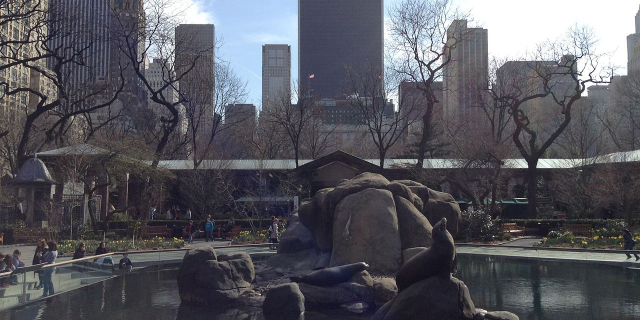






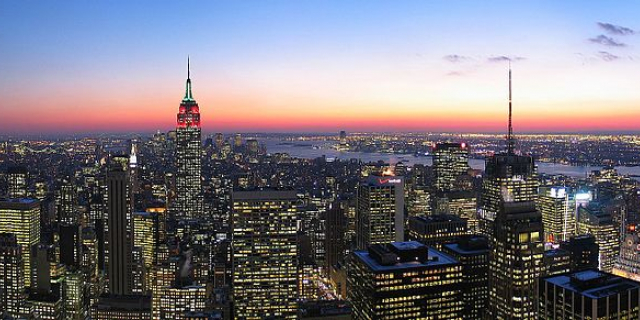








Add new comment